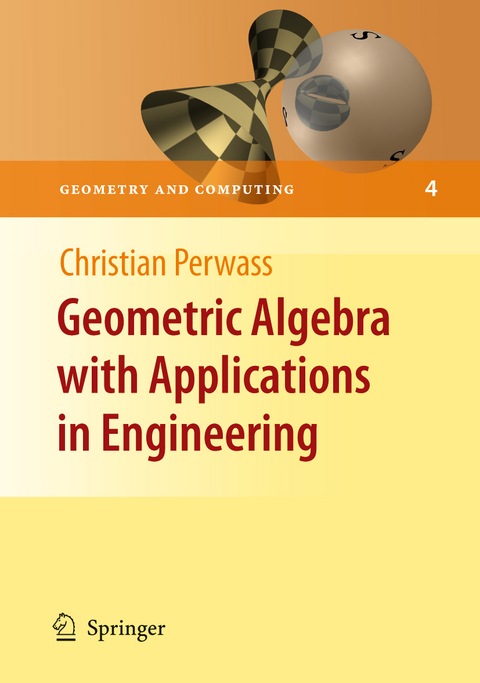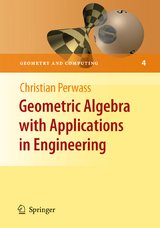Geometric Algebra with Applications in Engineering
Springer Berlin (Verlag)
978-3-540-89067-6 (ISBN)
The application of geometric algebra to the engineering sciences is a young, active subject of research. The promise of this field is that the mathematical structure of geometric algebra together with its descriptive power will result in intuitive and more robust algorithms.
This book examines all aspects essential for a successful application of geometric algebra: the theoretical foundations, the representation of geometric constraints, and the numerical estimation from uncertain data. Formally, the book consists of two parts: theoretical foundations and applications. The first part includes chapters on random variables in geometric algebra, linear estimation methods that incorporate the uncertainty of algebraic elements, and the representation of geometry in Euclidean, projective, conformal and conic space. The second part is dedicated to applications of geometric algebra, which include uncertain geometry and transformations, a generalized camera model, and pose estimation.
Graduate students, scientists, researchers and practitioners will benefit from this book. The examples given in the text are mostly recent research results, so practitioners can see how to apply geometric algebra to real tasks, while researchers note starting points for future investigations. Students will profit from the detailed introduction to geometric algebra, while the text is supported by the author's visualization software, CLUCalc, freely available online, and a website that includes downloadable exercises, slides and tutorials.
Theory.- Learning Geometric Algebra with CLUCalc.- Algebra.- Geometries.- Numerics.- Applications.- Uncertain Geometric Entities and Operators.- The Inversion Camera Model.- Monocular Pose Estimation.- Versor Functions.- Random-Variable Space.
From the reviews:
"This book shows how this geometric algebra relates to the more familiar concepts and how it can be applied to some engineering problems. ... The book is organized in two parts--five chapters on theory and an equal number on applications. ... Scientists and engineers will undoubtedly notice that they have seen cases and applications of the theorems and properties in more specific circumstances ... . It will be useful for the nonmathematician ... . It would be well worth the effort." (Anthony J. Duben, ACM Computing Reviews, June, 2009)
"The author introduces the principle of outer morphisms as generalizations of linear mappings in geometric algebras. ... This book is a very nice, comprehensive and methodically perfected presentation of a new important branch of mathematics. The book shows there is no separation line between theoretical and applied mathematics. Mathematics has to be understood as a monolithic whole - this is one of the messages of this warmly recommended monography." (Wolfgang Sprößig, Zentralblatt MATH, Vol. 1179, 2010)
"The book under review is an extensive introduction to geometric algebra and its various applications. Both the modern theory and recent results obtained by the author and his collaborators are included. ... This book is intended for graduate students, academics and researchers interested in geometric algebra and its applications." (Georgi Hristov Georgiev, Mathematical Reviews, Issue 2011 j)
| Erscheint lt. Verlag | 3.12.2008 |
|---|---|
| Reihe/Serie | Geometry and Computing |
| Zusatzinfo | XIV, 386 p. |
| Verlagsort | Berlin |
| Sprache | englisch |
| Maße | 155 x 235 mm |
| Gewicht | 745 g |
| Themenwelt | Informatik ► Grafik / Design ► Digitale Bildverarbeitung |
| Informatik ► Theorie / Studium ► Künstliche Intelligenz / Robotik | |
| Schlagworte | Algebra • algorithms • Applied mathematics • CLUCalc • Computer Graphics • computer vision • Geometric Algebra • Geometric Computing • Geometrie • Geometrische Datenverarbeitung • Geometry • Inversion camera model • Machine vision • pose estimation • Pythagorean-hodographs • Robotics • Uncertain geometry • Versor functions • Visualization |
| ISBN-10 | 3-540-89067-X / 354089067X |
| ISBN-13 | 978-3-540-89067-6 / 9783540890676 |
| Zustand | Neuware |
| Haben Sie eine Frage zum Produkt? |
aus dem Bereich




